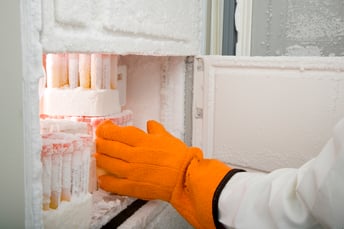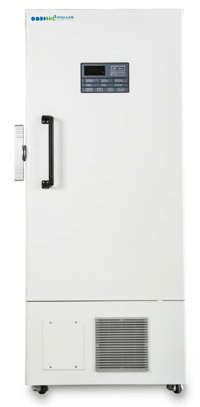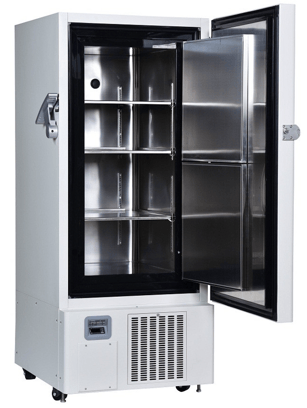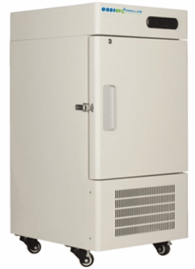
Laboratory freezers are necessary pieces of lab equipment for every life sciences laboratory that performs benchwork or collects patient samples. They’re so ubiquitous that they fade into the background, much like the light hum they put out 24/7.
As a result, lab freezers don’t occupy too much space in the back of most scientists' minds. However, when it is time to replace your old lab equipment, there are several important factors to consider when shopping for a laboratory freezer. Choosing the right lab fridge or freezer is vital and can make the difference between clean data and weeks' worth of botched Western blots.
What Factors Must be Considered When Choosing a Laboratory Freezer?
There are 5 key factors to consider when choosing a freezer for your laboratory.
- Temperature
- Operating costs
- Usage
- Features
- Interior layout


Pro-Cool -86C Ultra Low Temperature Freezer (12cu.ft)
1. Temperature
As one might guess, the very first consideration one should make when choosing a lab freezer is temperature. What are you intending on storing in this freezer? Many reagents are stored at -4 °C, but some need temperatures as low as -85 °C. An ultra-low temp lab freezer is a prerequisite if you have reagents or samples that require long-term storage.
2. Operating Costs
Different freezers require different amounts of power for standard operation. If you are on a limited budget, have electrical limitations at your lab, or just like saving electricity, you may consider a freezer with a lower running cost. However, be sure to keep in mind that there are ways to reduce costs with any freezer, such as minimizing the time that the door is open.
3. Use frequency
Every time your lab receives reagents, the box has the storage temperature conveniently printed on it, so choosing where to store things is a no-brainer, right? Sort of, but not exactly. For example, imagine you receive a reagent for an expensive assay that goes in the -20 °C lab freezer. You won't be using it all the time, and it has a max shelf-life of 6 months.
Sure, you could just throw it in the main freezer with all your standard reagents - regularly used anti-bodies, stock blocking solutions, and ice packs, but is that a good idea? Consider this - every time you open the door and dig around trying to find your goat anti-rabbit secondary antibody, you're letting your expensive and delicate reagent warm-up and cool down. It might not be a big deal right now, but over time that will shorten the life of your reagent. Losing the product at four months instead of six is an inconvenience, but you can't get back the time and samples wasted when your reagent is bad and it ruins weeks of experiments. In situations like this, having a dedicated freezer for storing infrequently used or highly perishable components would be advantageous.
4. Features
Another consideration when choosing a freezer for your laboratory is its features. For example, what level of temperature control do you need, and how do you want to set it? Some freezers are adjusted with something as simple as a dial. Others include a built-in digital interface. Whichever one fits your preferences is likely the best call. In addition, consider whether the solid door requires manual defrost or automated options.
However, it is worth considering whether to get a freezer with an alarm system. The last thing you want is to come back from a conference to have all of your samples and reagents warmed up and damp with condensation. Many ultra-low laboratory freezers have an alarm that goes off when temperatures rise or fall outside of set thresholds. This can be as simple as a loud beeping sound or it can include a digital system that sends you an SMS when temperatures rise. This feature isn't free, but an extra initial purchase is worth the price if it means not losing years of irreplaceable samples from a busted -80 °C lab freezer without ultra-low temps.
5. Real-estate
Finally, when purchasing an ultra-low lab freezer, you have to consider the internal layout. How tall are the things you need to store? What about their footprints? Most importantly, how much do you need to store? Having more freezers than you need is generally better, but budgets and floorspace are notable concerns. A major creature comfort to look out for is adjustable shelving. Doing so lets your lab adapt to changing needs without breaking the bank. Finally, if space is extra tight, consider a lab fridge/freezer combo or our 2cu.ft. -85 °C Pro-Cool ultra-low freezer, the smallest one of its class on the market.
Pro-Cool, -86C Ultra Low Temperature Freezer (2cu.ft.)
Pro-Cool Freezers by Pro-Lab Diagnostics
At Pro-Lab Diagnostics, we are proud to be a leading ultra-cold freezer manufacturer and offer several ultra-cold freezers in our Pro-Cool line. Our ultra-low temp freezers come in several sizes and feature sets at prices that won't break the grant. They are known for their reliability and are designed and manufactured with long-term storage in mind. In the rare event, you need assistance, our ultra-low temp freezers come with 7 days a week customer service to offer the best in user experience. If your lab needs cooling solutions, look no further than Pro-Cool freezers by Pro-Lab Diagnostics.



